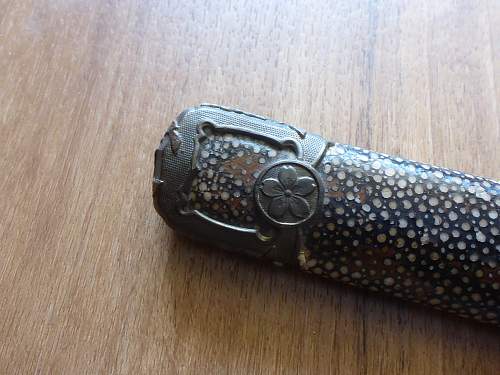Yup, matches.
関 [stamp]
濃州荘加兼利作
[Seki] Nōshū Shōka Kanetoshi-saku
Made by Shōka Kanetoshi of Nōshū Prefecture
- Nōshū is modern Gifu Prefecture.
From the Register of Names of Seki Forge Swordsmiths Since Showa 14, October (1939)
兼利 荘加利一 S15.09.01
Swordsmith name: Kanetoshi
Legal name: Shōka Toshikazu
Date entered the Seki Guild Log: Showa 15 [1940] September 1
From Markus Sesko's Japanese Swordsmiths:
KANETOSHI (兼利), Shōwa (昭和, 1926-1989), Gifu – “Kanetoshi” (兼利), real name Shōka Toshikazu (荘加利一), born February 22nd 1911, he worked as rikugun-jumei-tōshō, ryōkō no retsu (Akihide)
Also from Sesko regarding the ranking ryōkō no retsu:
When it comes to gendaitō and especially WWII-era smiths, this publication includes the ranking of about 300 contemporary smiths carried out by Kurihara Akihide (栗原昭秀) in 1942 under the title Seidai Tōshō Iretsu Ichiran (聖代刀匠位列一覧). He introduced seven ranks:
- shinpin no retsu (神品の列) Supreme masterworks
- kihin-jōi (貴品上位) Superior precious works
- kihin no retsu (貴品の列) Precious works
- jōko no jōi (上工の上位) Superior master
- jōkō no retsu (上工の列) Master
- ryōkō no jōi (良工の上位) Superior skilled artisan
- ryōkō no retsu (良工の列) Skilled artisan
-- Guy













 .
.


Bookmarks